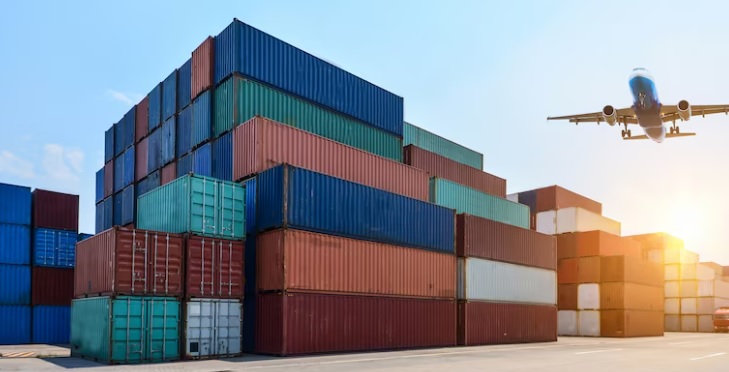
Dive into our comprehensive guide to comprehend different types of commodities in shipping. Unlock your global trade potential.
Shipping plays a crucial role in global trade, ensuring the movement of goods across borders efficiently and cost-effectively. The types of commodities transported in shipping vary widely, ranging from raw materials to finished products. These commodities are categorised based on their physical characteristics, handling requirements, and economic significance. Understanding these categories is essential for logistics planning, risk management, and regulatory compliance. This article explores the main types of commodities in shipping, including bulk cargo, break bulk cargo, containerised cargo, liquid cargo, perishable goods, and hazardous materials. For more information, visit https://www.dhl.com/discover/en-vn/ship-with-dhl/start-shipping/classify-your-commodity.
Bulk Cargo
Bulk cargo consists of large quantities of unpackaged goods transported in bulk form, typically loaded directly into a ship’s hold. It is divided into two main types: dry bulk and liquid bulk.
- Dry Bulk Cargo: This includes raw materials such as grains, coal, iron ore, and cement. These commodities are typically loaded and unloaded using conveyor belts, grab buckets, or pneumatic systems. Due to their high-volume, dry bulk cargo requires specialized ships called bulk carriers.
- Liquid Bulk Cargo: This category consists of liquids such as crude oil, liquefied natural gas (LNG), chemicals, and vegetable oils. These goods are transported in tanker ships equipped with specialized storage tanks that ensure safe handling and prevent contamination.
Bulk cargo plays a vital role in industries such as construction, energy, and agriculture, as these raw materials are foundational to production processes.
Break Bulk Cargo
Break bulk cargo refers to goods that are transported in pieces rather than in bulk or containers. These commodities require individual handling and are typically loaded onto ships in crates, bags, pallets, or barrels. Examples include machinery, steel coils, timber, and project cargo such as wind turbine components.
This type of cargo is often transported using general cargo ships equipped with cranes for loading and unloading. Although break bulk shipping is more labor-intensive than containerized transport, it remains essential for oversized or irregularly shaped goods that cannot fit into standard containers.
Containerized Cargo
Containerized cargo is one of the most efficient and widely used methods of shipping goods. It involves the transportation of goods in standardized shipping containers, which come in various sizes such as 20-foot and 40-foot units. These containers protect cargo from damage and allow for seamless movement between different modes of transportation, including ships, trucks, and trains.
Containerized cargo includes a wide range of goods, from consumer electronics and textiles to furniture and automobile parts. The key advantages of this method include faster handling, reduced theft risk, and lower shipping costs due to economies of scale.
Perishable Goods
Perishable goods are commodities that require controlled temperature and humidity conditions during transport to prevent spoilage. These include fresh fruits, vegetables, dairy products, seafood, and pharmaceuticals.
Refrigerated containers, known as reefer containers, are used to maintain the required temperature for these goods. Some perishable commodities, such as fresh flowers or high-value seafood, may also be transported via air freight to ensure they reach their destination quickly. The transportation of perishable goods requires careful planning, as delays or temperature fluctuations can lead to significant losses.
Hazardous Materials
Hazardous materials, or dangerous goods, are substances that pose risks to human health, safety, or the environment. These include chemicals, explosives, radioactive materials, and flammable liquids. Due to their potential dangers, hazardous materials must be transported in compliance with strict international regulations, such as the International Maritime Dangerous Goods (IMDG) Code.
Proper labeling, packaging, and documentation are critical for the safe shipping of hazardous materials. Additionally, specialized training is required for personnel handling these goods to minimize risks during transport.
High-Value and Specialty Cargo
Some commodities, while not necessarily hazardous or perishable, require special handling due to their high value or unique characteristics. These include luxury items such as jewelry, fine art, and high-end electronics. Special security measures, tracking systems, and insurance coverage are often necessary to protect these shipments.
Additionally, specialty cargo includes live animals, medical equipment, and military supplies, all of which require specific transport conditions to ensure their safety and integrity during transit.
Conclusion
Shipping encompasses a diverse range of commodities, each requiring specialized handling and transport methods. Bulk cargo, both dry and liquid, serves as the backbone of industrial supply chains, while break bulk cargo supports the movement of heavy and irregular goods. Containerized shipping has revolutionized global trade by offering efficiency and cost savings. Perishable goods and hazardous materials require strict handling regulations, while high-value and specialty cargo demand extra security measures. Understanding these classifications helps businesses, logistics professionals, and policymakers navigate the complexities of global shipping, ensuring safe and efficient trade across the world.





